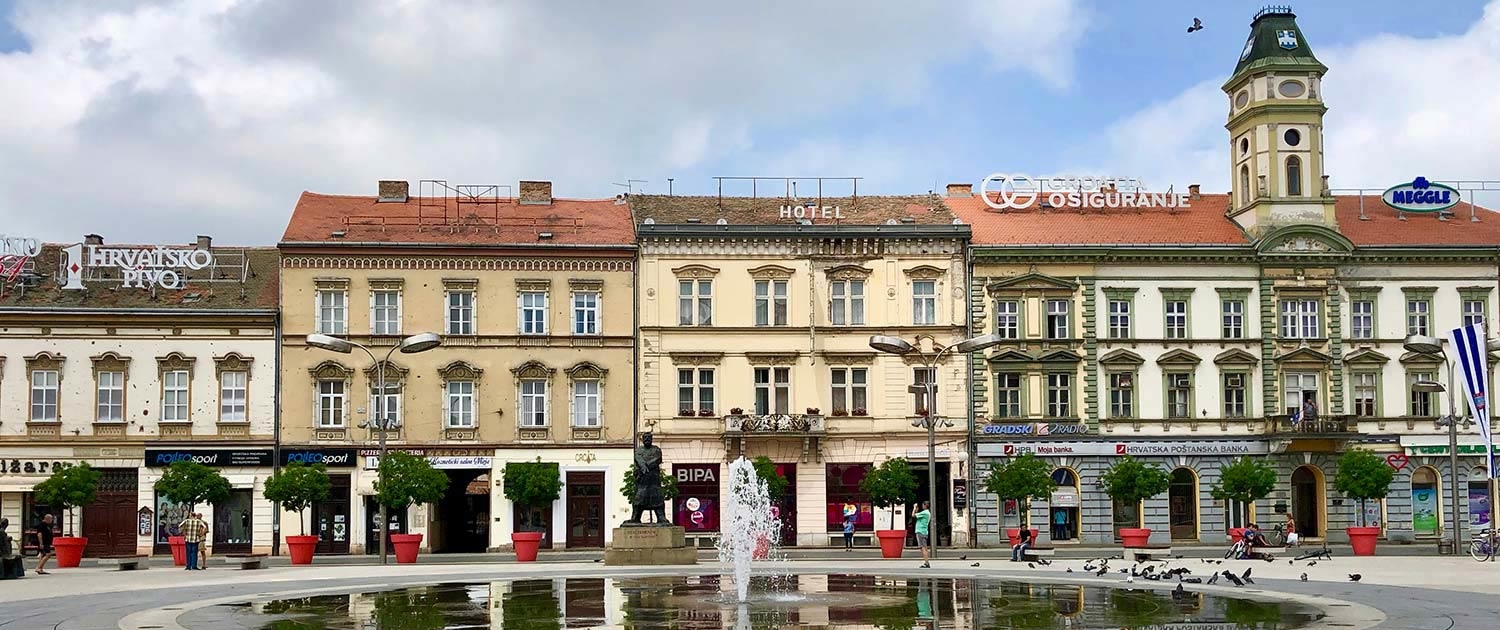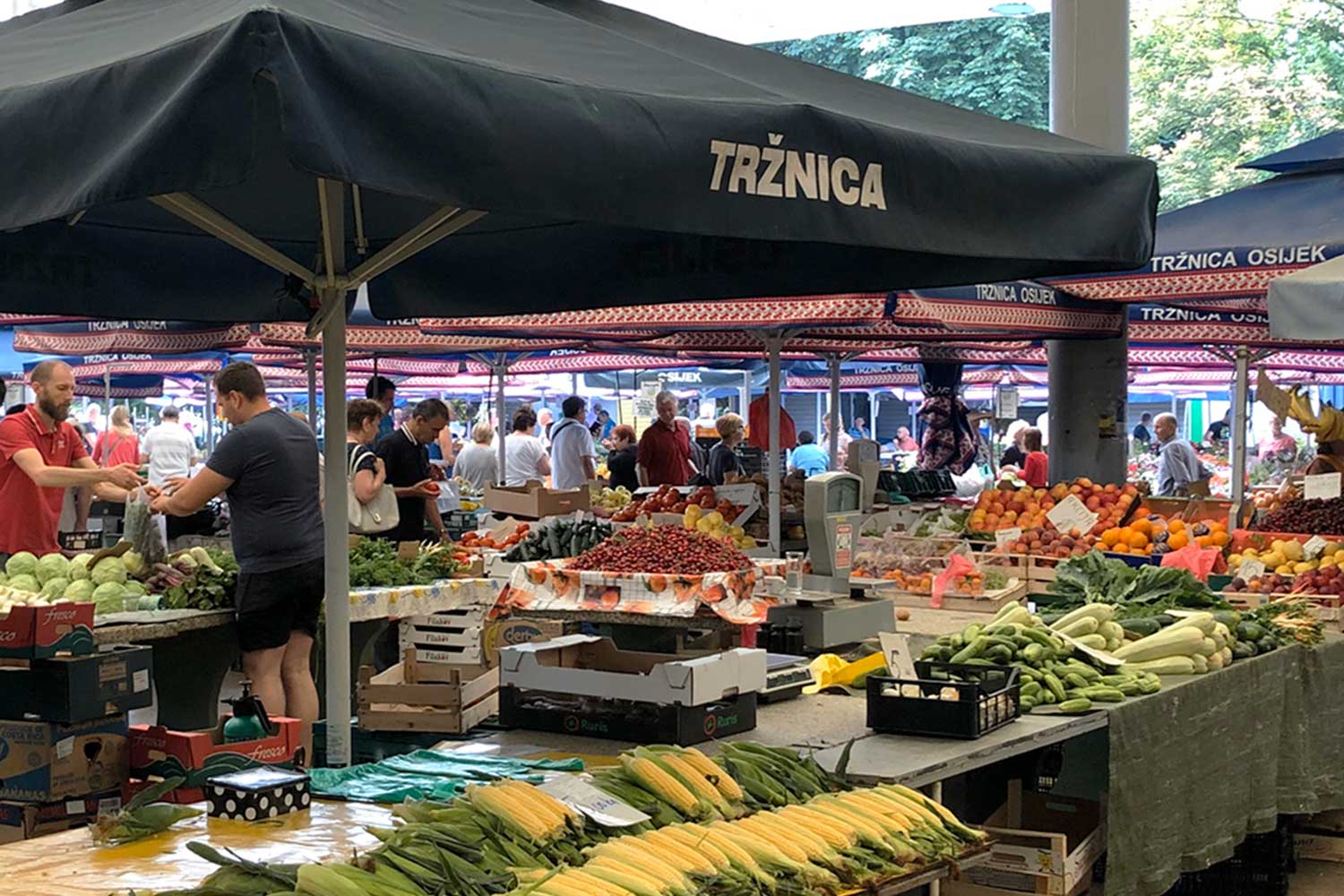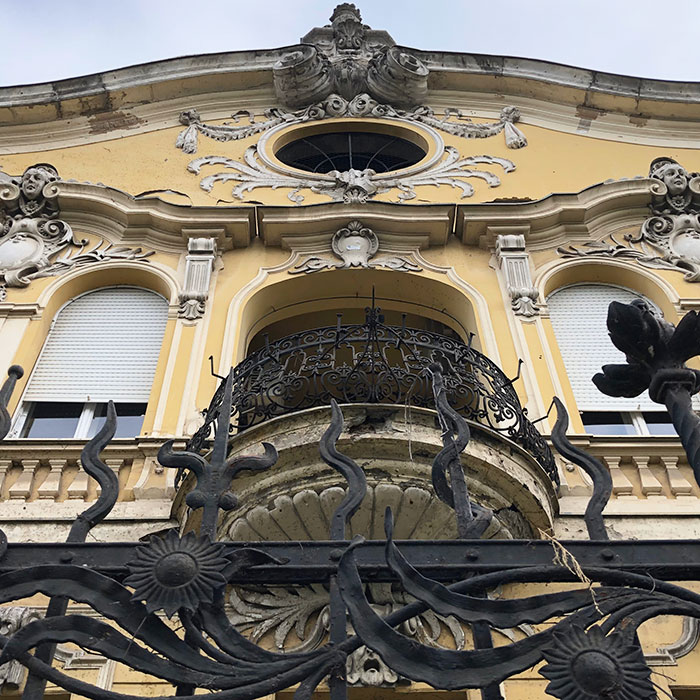How could history possibly be boring? History is stories—not a list of dates and places, but a retelling of the lives of people who walked on the same cobbled streets and admired the same buildings we see today. That couldn’t be more true than in a city like Osijek, whose stories include marauding Ottomans, the land-hungry Habsburg monarchy, and a modern war that left the scars still visible on the town’s lovely Baroque buildings.
Slavonia has been prized throughout history for its location between primary rivers, its abundant natural resources, and its fertile growing regions. As with much of Croatia, the region’s ancient history features the Illyrians and Celts. Located on the Drava River, the city of Osijek gained prominence in this region and was an important center in Roman times under the name Mursa.
Osijek was settled by Croats in the 7th century. The city was almost completely destroyed by the Ottomans in 1526, rebuilt in their distinctive style, and occupied by them. In 1687, Osijek was the site of a standoff between the Ottomans and the Habsburg and Bavarian armies, which led to the Ottomans’ fatal defeat at the Battle of Mohacs. This opened the way for centuries of growth and development, bringing many features that are similar to other central European cities.
So grab a good guidebook—better yet, find a local guide—and discover the stories that this walkable city is waiting to reveal. A good place to begin is Tvrđa, a Habsburg star fortification with the largest collection of Baroque buildings in Croatia. In its time it was the largest Habsburg fortress on the border with the Ottoman Empire, protecting this gateway city from reinvasion. Tvrđa is home to the wonderful Museum of Slavonia, which contains many historical artifacts. While you’re there, don’t miss Crkva svetog Mihaela (the Church of St. Michael), built on the site of the Turkish Kasim-Pasha mosque; you can find yellow paving from the Ottoman period, and the church bells are said to ring every Friday at the exact moment of liberation from the Ottomans in 1687. And be sure to indulge in Croatian coffee culture at one of Tvrđa’s many outdoor cafés.
Then take a leisurely stroll to Europska avenija (European Avenue), lined with the elegant Secession-style Austrian manors that Osijek is famous for. Find a fresh snack or fill your shopping bag at Tržnica Osijek, the lively farmer’s market that features fruits and vegetables from some of the richest agricultural areas in all of Croatia. Finally head toward the main square, Ante Starčević Square, to visit Osijek’s stunning cathedral.
Osijek is alive with history, culture, and traditional crafts.




